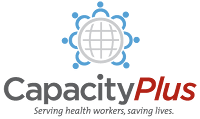Philippines
Context-specific, Evidence-Based Planning for Scale-Up of Family Planning Services to Increase Progress to MDG 5: Health Systems Research
Local health planners are in a prime position to devise feasible context-specific activities to overcome
constraints and increase met need for family planning to accelerate progress towards MDG 5. [from abstract]
- 592 reads
Managing Health Worker Migration: A Qualitative Study of the Philippine Response to Nurse Brain Drain
This study examines how the development of brain drain-responsive
policies is driven by the effects of nurse migration and how such efforts aim to achieve mind-shifts among nurses, governing and regulatory bodies, and public and private institutions in the Philippines and worldwide. [from abstract]
- 1201 reads
Assessment of Factors Influencing Retention in the Philippine National Rural Physician Deployment Program
In response to the shortage of doctors in remote communities, the Philippines began a progrom to attract physicians to work in such areas for a prescribed 2-year period, but ongoing monitoring shows that very few chose to remain there for longer. This assessment was carried out to explore the reasons for the low retention rates and to propose possible strategies to reverse the trend. [adapted from abstract]
- 1072 reads
Human Resources for Health Migration in the Philippines: A Case Study and Policy Directions
This paper aims to provide information on the migration of Filipino health workers and the impact it has on the individual migrant, his family, professions and specifically the health care system. Further it discusses policy initiatives that have been established to both ensure the country’s competitiveness in the global labor market as well as strengthen its capability to strengthen its health care system. [from introduction]
- 2554 reads
Human Resources for Health and Philippine Policy Options
This literature review attempts to put the phenomenon of HRH migration into context in terms of the underlying factors that prompt workers to relocate, as well as the facilitating effects of globalization and worldwide HRH shortages. [adapted from abstract]
- 1002 reads
Can Medical Education in Poor Rural Areas be Cost-Effective and Sustainable: The Case of the Ateneo de Zamboanga University School of Medicine
This study examined the hypothesis that a medical school in a low-resource setting, based on volunteer faculty, can be sustainable and associated with improvement in medical workforce and population health outcomes. [from abstract]
- 1155 reads
Community Engagement in Facility-Based Quality Improvement in the Philippines: Lessons for Service Delivery and Governance
This report summarizes a quality assurance project and explains how citizens were engaged at the facility level in improving health service quality, while also contributing to increased responsiveness and accountability on the part of health providers. [adapted from author]
- 1601 reads
Systematic Factors of Errors in the Case Identification Process of the National Routine Health Information System: A Case Study of Modified Field Health Services Information System in the Philippines
This study aimed to investigate the mechanisms of errors in the case identification process in the existing routine health information system in the Philippines by measuring the risk of committing errors for health program indicators. [from abstract]
- 1363 reads
Human Resources for Health in Maternal, Neonatal and Reproductive Health at Community Level: a Profile of the Philippines
This profile summarises the available information on the cadres working at community level in the Philippines; their diversity, distribution, supervisory structures, education and training, as well as the policy and regulations that govern their practice. [from summary]
- 1384 reads
Effectiveness of the Tailored EBP Training Program for Filipino Physiotherapists: a Randomised Controlled Trial
This study assesses the effectiveness of a tailored evidence-based practice (EBP) training program for Filipino physiotherapists in improving knowledge, skills, attitudes, behaviour, and capacity to engage with referring doctors to determine the most effective treatments for their patients. [adapted from abstract]
- 1568 reads
Producing the “World-Class” Nurse: the Philippine System of Nursing Education and Supply
This presentation offers the results of a study examining organizational and institutional perspectives on international labor migration, as well as a case study on nurse migration and recruitment from the Philippines to the U.S.
- 3724 reads
Guideline for Regional HRH Country Strategic Planning
This presentation covers the proces of developing a regional guideline for country strategic planning, results from a situational analysis, a draft regional guideline and the next steps. [adapted from author]
- 2290 reads
Internationally Recruited Nurses from India and the Philippines in the United Kingdom: the Decision to Emigrate
The United Kingdom has recruited nurses from countries with a reported surplus in their nursing workforce, such as India and the Philippines. However, little is known about the decision to emigrate made by nurses from these countries. One theory suggests that individuals weigh the benefits and costs of migration: the push and pull factors. This paper challenges the restricted economic focus of this predominant theory and compares the diverse motivations of nurses from different countries as well as those of nurses with previous migratory experience and first-time migrants. [from abstract]
- 2804 reads
Filipino Midwives Reaching out to the Communities
This presentation discusses the roles and challenges of private sector midwives and how they can benefit community health care.
- 5809 reads
Role of Networking in Managing Migration of Human Resources for Health in the Philippines
This paper aims to present the existing HRH problems exemplified by migration in the light of other related issues such as the nurse medic phenomenon, foreign doctors taking up residency training, quality of nursing education, paradoxical enrollment trends in nursing and medicine and the effects of migration on health service delivery.
- 5055 reads
Philippine HRH Master Plan (2005-2030)
This presentation was given at the First Forum on Human Resources for Health in Kampala. It outlines the Philippine’s HRH Master Plan to develop and install HHRMD systems that will support Philippine health sector reforms to improve health outcomes. [adapted from author]
- 14497 reads
Securing Medical Personnel: Case Studies of Two Source Countries and Two Destination Countries
In order to highlight the driving forces determining the international allocation of medical personnel, the cases of four countries (the Philippines and South Africa as source countries, and Saudi Arabia and the United Kingdom as destination countries) are examined. The paper concludes that changes in demand generated in major destination countries determine the international allocation of medical personnel at least in the short run. [from abstract]
- 9521 reads
Migration of Health Workers: Country Case Study Philippines
This study aims to provide in-depth information on the migration of Filipino health workers and the repercussions this has on individual migrants, their families, their professions and the nation as a whole.
- 11529 reads
Nurse Migration from a Source Country Perspective: Philippine Country Case Study
This case study provides information on Philippine nurse migration patterns and presents a sending-country perspective on the benefits and costs of this phenomenon. Our aim is to identify strategies that will ensure that international nurse migration is beneficial for both sending and receiving countries. [from abstract]
- 3813 reads
Strengthening Midwife-Hilot Partnership to Improve Maternity and Newborn Care Services in ARMM
This model for strengthening the midwife and hilot partnership was developed to improve the quality and accessibility of maternity and newborn care services (MNCS) in the Autonomous Region in Muslim Mindanao (ARMM). It aims to provide quality MNCS at various service settings like the home, community and health facilities. [introduction]
- 3499 reads
Mainstreaming Natural Family Planning: the IRH Experience in the Philippines
This report documents the efforts of the Institute for Reproductive Health (IRH) to integrate natural family planning methods into the health delivery system in the Phillipines. It discusses the venues used for implementation such as government and NGO partnerships as well as IRH’s training resources and activities for nurses and midwives on family planning. Finally, the report details best practices and lessons learned from the multi-year project.
- 3313 reads
Institutionalization of Reproductive Health Preservice Education in the Philippines: An Evaluation of Programmatic Effort, 1987-1998
From 1987 to 1998, JHPIEGO, through its Training in Reproductive Health (TRH) Project, collaborated with the Association of Deans of Philippine Colleges of Nursing (ADPCN) and the Association of Philippine Schools of Midwifery (APSOM) to strengthen preservice nursing and midwifery education in the Philippines. Between 1987 and 1994, JHPIEGO initiated activities to strengthen family planning/reproductive health (FP/RH) and enhance trainer/faculty development in five nursing schools and five midwifery schools.
- 2435 reads
Health Worker Benefits in a Period of Broad Civil Service Reform: The Philippine Experience
Developing countries that have to cope with pressures to reform their bureaucracies have to contend with increasing health worker benefits and salaries that are often intended to retain these health workers in government service. In the Philippines, national and local efforts in health have been forced to focus on guaranteeing some of these benefits, and local governments are feeling the financial limitations of their local funds. [from abstract]
- 3130 reads
Decentralization of Health Systems in Ghana, Zambia, Uganda and the Philippines: a Comparative Analysis of Decision Space
This study reviews the experience of decentralization in four developing countries: Ghana, Uganda, Zambia and the Philippines. It uses two analytical frameworks to describe and compare the types and degrees of decentralization in each country. The first framework specifies three types of decentralziation: deconcentration, delegation and devolution. The second framework uses a principle agent approach and innovative maps of decision space to define the range of choice for different functions that is transferred from the centre to the periphery of the system. [from abstract]
- 4780 reads




